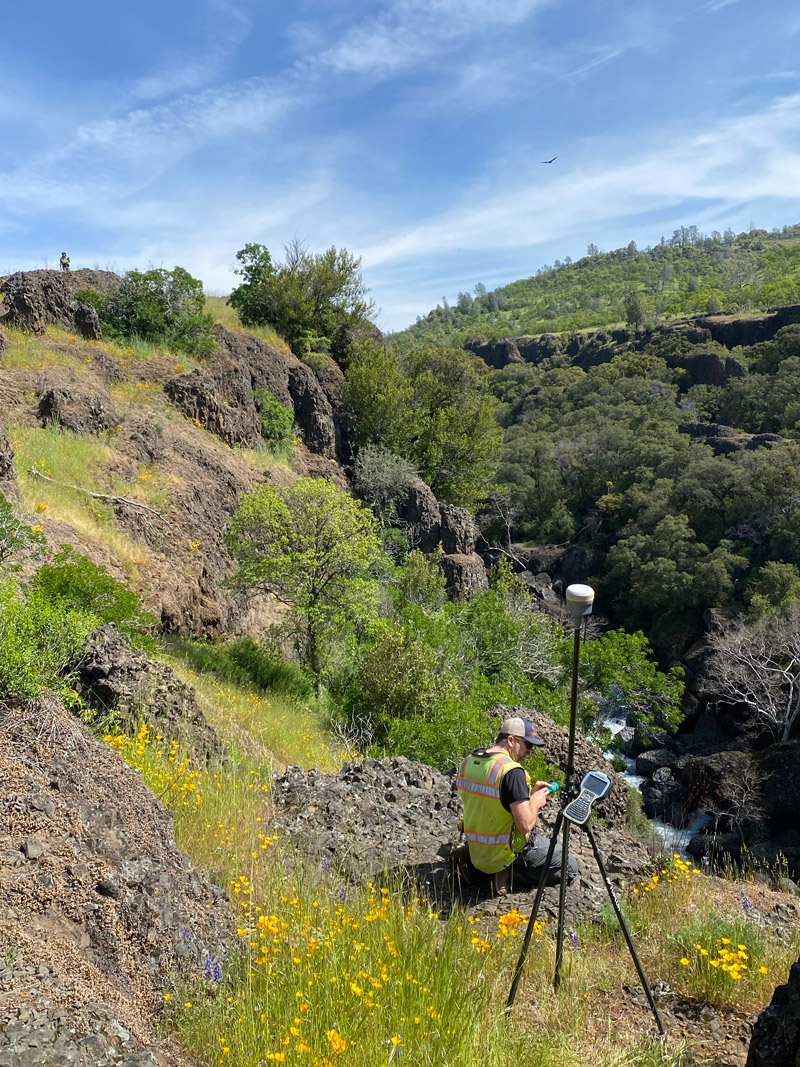Accelerated Restoration Project Begins on Big Chico Creek
In April 2023, the permitting and design phase began at Big Chico Creek, or Ótakim Séwi, for the Iron Canyon Fish Passage Project which will create a path for anadromous and other migratory native fish to travel beyond Iron Canyon to Big Chico Creek Ecological Reserve and into critical cold-water habitats. The project team will approach project permitting and design simultaneously as we work towards construction in 2025.
What happens during this phase?
Before project construction can begin, the project team must obtain necessary permits to meet relevant state and federal regulations. At the same time, the team will work to develop a final design for the project construction to follow. Design work will be led by Michael Love and Associates. Permitting work will be conducted by Gallaway Enterprises.
In tandem with the permitting and design phase, a robust education and outreach program will be kicked off by Chico State’s Big Chico Creek Ecological Reserve and the Mechoopda Tribe who have lived and fished along Ótakim Séwi since time immemorial.
Accelerated Restoration at Big Chico Creek & Beyond
Many restoration projects across the state are funded in stages, through multiple grants, but the Iron Canyon Fish Passage Project received funding from NOAA’s Community-based Restoration Program through a single grant to cover all stages – from planning through to construction. This funding model can significantly reduce administrative burdens and timing delays associated with separate grants. It accelerates restoration on Big Chico Creek and provides an example for accelerating restoration work statewide.
For this project, CalTrout also relies on the work of our partner organization Sustainable Conservation and their collaboratively developed Statewide Tools to Accelerate Aquatic Habitat Restoration. Tools like this help simplify permitting processes, reduce costs, and further accelerate restoration at Big Chico Creek and beyond.
At Big Chico Creek, we expect these efficiencies to reduce the permitting time in half, move the project to construction 1.5 years sooner, and reduce project costs by $250,000 allowing us to get more restoration on the ground faster!
“This is the most streamlined way that I can think of to get something from concept to construction,” said CalTrout Mt. Lassen Regional Director Damon Goodman. “Together we are building a more efficient approach to restoration.”
Iron Canyon Fish Passage Project Team
California Trout, Mechoopda Indian Tribe of Chico Rancheria, Chico State’s Big Chico Creek Ecological Reserve, the California Department of Fish and Wildlife, the City of Chico, the U.S. Fish and Wildlife Service, National Oceanic and Atmospheric Administration, Syblon Reid, Michael Love and Associates, Gallaway Enterprises, FISHBIO, Western Fishes, Maxim Crane Works, Gayland Taylor, NV5, Dr. Paul Maslin, and interested community members.
Project funding comes from NOAA Restoration Center’s Community-based Restoration Program.







